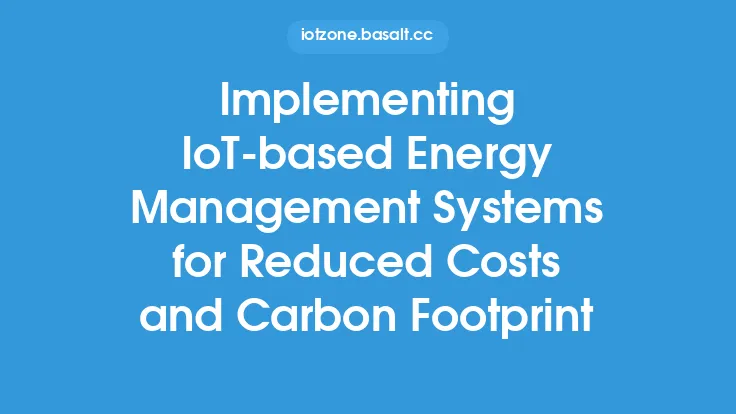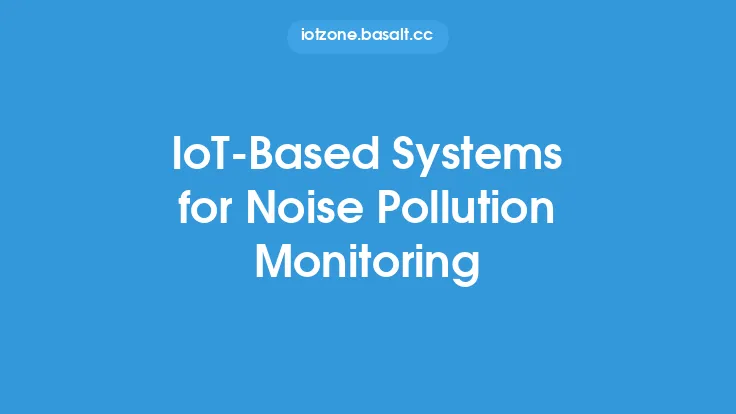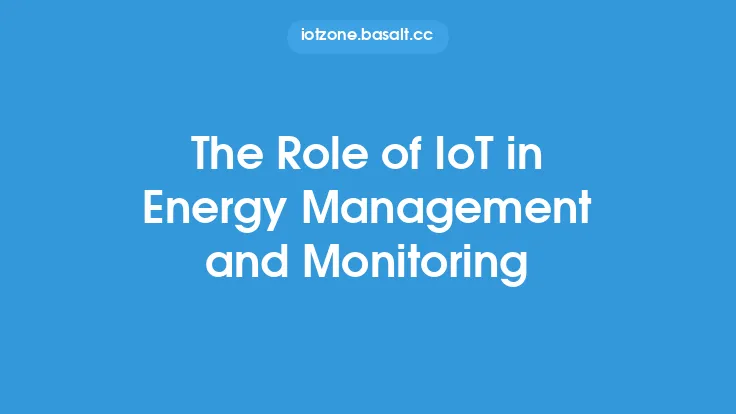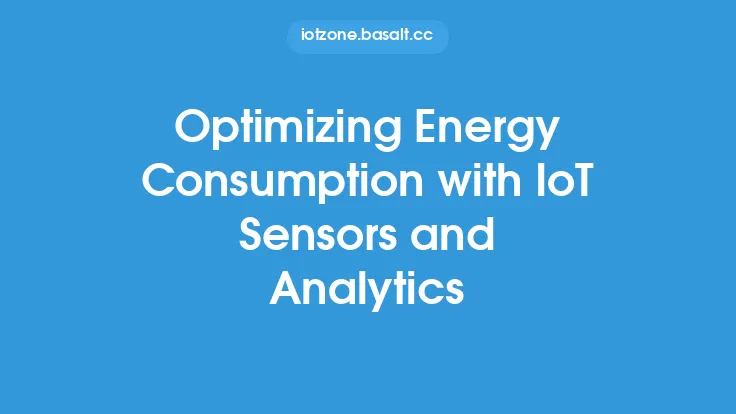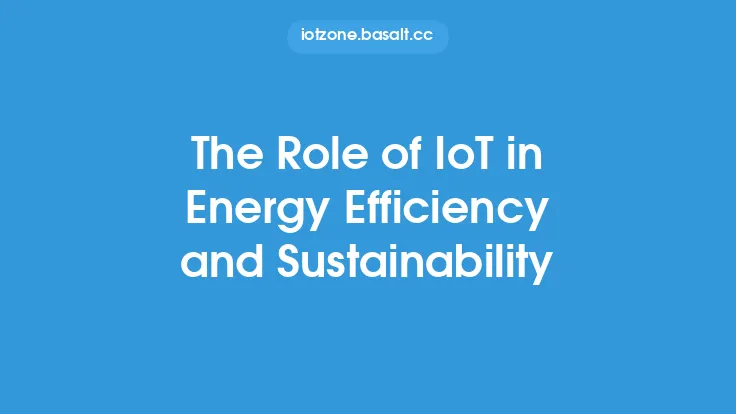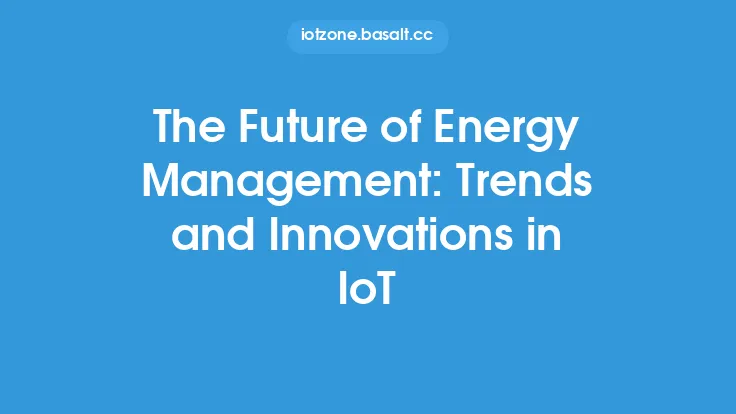The increasing demand for energy efficiency and reduced energy consumption has led to the development of innovative solutions for industrial and commercial settings. One such solution is the Internet of Things (IoT)-based energy monitoring systems, which have revolutionized the way energy is managed and consumed in these settings. These systems utilize a network of sensors, meters, and other devices to collect and analyze energy usage data in real-time, providing valuable insights into energy consumption patterns and identifying areas of inefficiency.
Key Components of IoT-based Energy Monitoring Systems
IoT-based energy monitoring systems consist of several key components, including energy meters, sensors, gateways, and software applications. Energy meters are used to measure energy consumption at various points in the system, such as at the main electrical panel or at individual equipment. Sensors, on the other hand, are used to monitor other parameters such as temperature, humidity, and power quality. Gateways are used to collect data from the meters and sensors and transmit it to the cloud or a local server for analysis. Software applications are used to analyze the data, provide real-time monitoring, and generate reports and alerts.
How IoT-based Energy Monitoring Systems Work
IoT-based energy monitoring systems work by collecting data from the energy meters and sensors and transmitting it to the cloud or a local server. The data is then analyzed using advanced algorithms and machine learning techniques to identify patterns and trends in energy consumption. The system can also be integrated with other systems such as building management systems (BMS) and supervisory control and data acquisition (SCADA) systems to provide a comprehensive view of energy consumption. The analyzed data is then presented to the user through a web-based dashboard or mobile app, providing real-time monitoring and alerts.
Benefits of IoT-based Energy Monitoring Systems
The benefits of IoT-based energy monitoring systems are numerous. One of the primary benefits is the ability to monitor energy consumption in real-time, allowing for quick identification and correction of energy-wasting practices. The system can also be used to track energy usage patterns and identify areas of inefficiency, allowing for targeted energy-saving measures. Additionally, the system can be used to monitor power quality and detect potential issues before they become major problems. Other benefits include reduced energy consumption, lower energy costs, and extended equipment life.
Applications of IoT-based Energy Monitoring Systems
IoT-based energy monitoring systems have a wide range of applications in industrial and commercial settings. In industrial settings, these systems can be used to monitor energy consumption in manufacturing processes, identify areas of inefficiency, and optimize energy usage. In commercial settings, these systems can be used to monitor energy consumption in office buildings, retail stores, and other commercial facilities. The systems can also be used in data centers, hospitals, and other critical infrastructure facilities where energy reliability and efficiency are crucial.
Technical Requirements and Considerations
The technical requirements and considerations for IoT-based energy monitoring systems are critical to their successful implementation. One of the primary considerations is the selection of the right communication protocol, such as Wi-Fi, Zigbee, or cellular, to ensure reliable and secure data transmission. Another consideration is the selection of the right sensors and meters to ensure accurate and reliable data collection. The system must also be designed to handle large amounts of data and provide real-time analysis and alerts. Additionally, the system must be secure and compliant with relevant industry standards and regulations.
Challenges and Limitations
Despite the many benefits of IoT-based energy monitoring systems, there are several challenges and limitations to their adoption. One of the primary challenges is the high upfront cost of implementing the system, which can be a barrier for some organizations. Another challenge is the complexity of the system, which can require significant technical expertise to install and maintain. Additionally, the system must be integrated with existing systems and infrastructure, which can be a challenge. Other challenges include data security and privacy concerns, as well as the potential for system downtime and data loss.
Best Practices for Implementing IoT-based Energy Monitoring Systems
To ensure the successful implementation of IoT-based energy monitoring systems, several best practices must be followed. One of the primary best practices is to conduct a thorough energy audit to identify areas of inefficiency and opportunities for energy savings. Another best practice is to select the right system and components for the specific application and to ensure that the system is properly installed and maintained. The system must also be regularly updated and calibrated to ensure accuracy and reliability. Additionally, the system must be integrated with existing systems and infrastructure, and training must be provided to personnel to ensure that they can effectively use the system.
Future Developments and Trends
The future of IoT-based energy monitoring systems is exciting and rapidly evolving. One of the primary trends is the increasing use of artificial intelligence (AI) and machine learning (ML) to analyze energy consumption data and provide predictive analytics. Another trend is the increasing use of cloud-based systems and big data analytics to provide real-time monitoring and alerts. The use of IoT-based energy monitoring systems is also expected to expand into new applications, such as residential settings and smart cities. Additionally, the development of new technologies, such as 5G networks and edge computing, is expected to further enhance the capabilities and applications of IoT-based energy monitoring systems.
